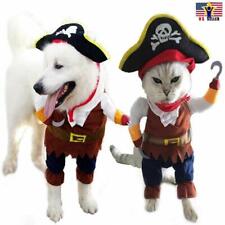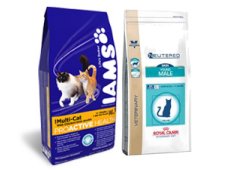Is Your Natural Cat Food Truly Natural?

Over the years, people have become more concerned about making sure the food they put on the table for their families is “natural” or minimally processed. Now that concern is being extended to what they put in their cat’s dish, according to Katy J. Nelson, D.V.M., an emergency veterinarian in Alexandria, Va., who also works on pet nutrition. But just what is a “natural” cat food?
Regulation of Cat Food
The Association of American Feed Control Officials (AAFCO) regulates labeling of cat food in the United States so that companies can’t make claims about pet food products that are untrue. The FDA also regulates pet food, although the administration doesn’t directly state what constitutes a "natural" product.
The AAFCO defines the term "natural" as being "… derived solely from plant, animal or mined sources … not containing any additives or processing aids that are chemically synthetic except in amounts as might occur unavoidably in good manufacturing practices."
Most commercial pet foods do contain some synthetic sources of essential vitamins and minerals in order to comply with AAFCO’s requirements that the food be "complete and balanced" to meet a pet’s nutritional needs, says Amy Dicke, D.V.M., a Dayton, Ohio-based veterinarian who has worked with teams of nutritionists and researchers.
While experts like Dr. Nelson and Dr. Dicke caution that there is no scientific agreement yet that natural foods provide more safety or nutritional value than certified "complete and balanced" cat foods, they add that natural ingredients certainly don’t hurt. "I don’t want people to expect health miracles from feeding a natural food," says Dr. Dicke. "There is no evidence that supports that a natural product is better or safer than, let’s say, a traditional product. But I’m not saying that it’s worse. It’s a personal choice … another feeding option."
Natural Ingredients to Look For
Protein: Cats are obligate carnivores, meaning that, due to their genetic makeup, cats need to eat the tissue of other animals to survive. Meat must be the primary source of their nutrition, so one of the first ingredients should identify the protein source: poultry, fish or some other meat.
Byproducts: This term has gotten a bad rap. Meat- or plant-based byproducts fit the definition of "natural" under the AAFCO regulations. "Good, high-quality pet food byproducts don’t need to be a four letter word," Dr. Nelson says. Think about a cat’s diet in the wild. Feral felines eat mice, and not only the white meat, but also the organs and tissue. These byproducts often give cats essential amino acids, such as taurine.
Grains: Natural sources of carbohydrates, such as corn meal, brewer’s rice and whole grain barley, can provide energy for your cat’s activities during the day, Dr. Dicke says.
Fruits and Vegetables: Spinach, tomatoes and peas are rich in vitamin E and antioxidants that will help your cat build its immunity. Beet pulp and apples are a great source of fiber to keep your cat regular. Some added vitamins and minerals are needed in commercial pet foods to meet the AAFCO standards, but if the food contains high-quality ingredients, there shouldn’t be much supplementation.
Artificial Colors, Flavors or Preservatives: "Natural" cat foods should not have synthetic fillers, artificial colors or flavors or man-made preservatives. Natural flavors and colors are okay. Some preservatives are naturally occurring, such as vitamin E and tocopherols (TCP), which are fine to help preserve food.
In deciding on a food, talk to your veterinarian about your cat’s individual needs. Some pet food companies also list toll-free phone numbers on their packaging so that you can call and ask questions about the nutritional contents of their foods.













